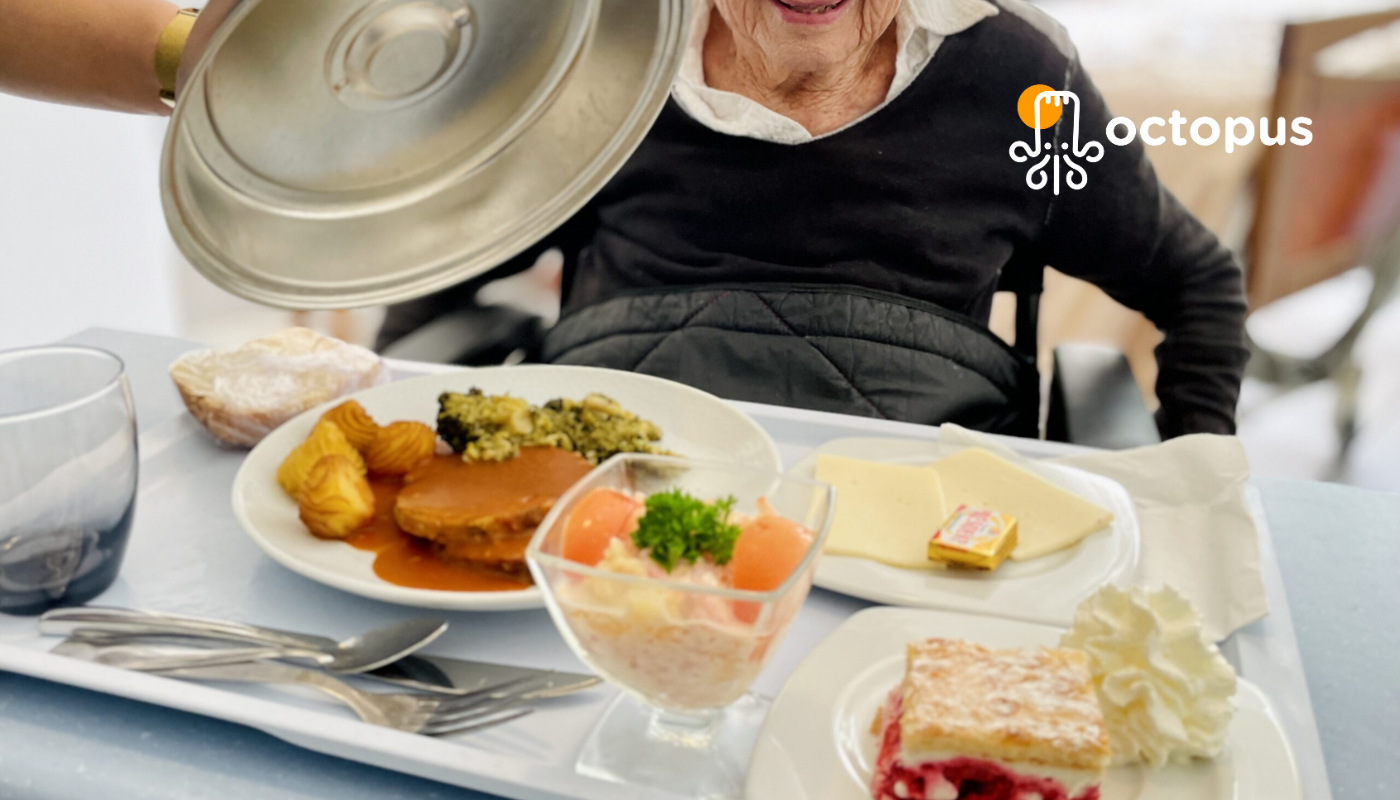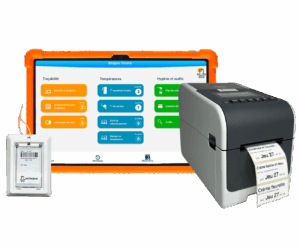Administrative closure of a restaurant following a hygiene inspection
Comprendre l’HACCP
🗓 Mis à jour le : 24/04/2025
Summary
Administrative closure of a restaurant, which is rarely definitive, is a sanction applied by the health authorities following an inspection. In this article, we’ll give you all our tips for reopening as quickly as possible, and explain:
- what an administrative closure of a restaurant is,
- the common causes that trigger this sanction,
- what to do in the event of closure,
- and above all, who to contact to reopen as quickly as possible.
At the end of the article, we offer you a checklist to help you prepare and ensure everything is in order so you can reopen as quickly as possible. ✅
What is an administrative closure?🔍
In all cases, the inspection services write an inspection report, which you must analyze point by point. This report details the reasons for the closure and the expected corrective actions.
Temporary or permanent closure: what’s the difference?
- ⏳ Temporary closure: the most common. It can last from a few days to several weeks, depending on how long it takes the establishment to correct the identified non-compliances. It is lifted only after a new, favorable inspection, if the appropriate corrective actions have been implemented.
- ❌ Permanent closure: much rarer, it is decided when the restaurant is unable to achieve compliance.
In short, nothing is final if you apply proper hygiene practices and follow the HACCP method.
Fines, warnings: other possible sanctions
Before resorting to closure, the administration may also decide to:
- 📃 issue a formal notice to the operator, with a deadline to correct the issues;
- 💰 impose an administrative fine, especially if non-compliant products are detected or dangerous practices are repeated;
- 🦠 order the withdrawal or destruction of food products.
What are the causes of administrative closure?❌
Premises and equipment in poor condition 🪛
Dirty kitchens, damaged floor or wall coverings, poorly cleaned materials that cannot be disinfected… These are classic reasons for closure. Example: broken and soiled tiles or clogged floor drains, combined with other issues, may justify a closure decision.
Be sure to include a regular visual inspection of your facilities in your cleaning plan. The rundown state of the premises can be a real red flag for an inspector.
Presence of pests 🪳
The presence of rodents and droppings, cockroach nests, etc. can be grounds for closure if there is a lack of a pest control plan or if it is inactive (no service visits, no proof of action). These situations constitute violations of Good Hygiene Practices and present a direct risk of food contamination.
Having a pest control procedure is mandatory in food service. This procedure must be included in your HACCP plan and actually implemented to ensure compliance with standards. To support you in this process, we’ve prepared a detailed guide and a free downloadable PDF sheet that you can directly integrate into your HACCP documentation. 📃
Insufficient personal hygiene 🧽
Dirty uniforms, staff not washing their hands, a broken or missing handwashing station in the kitchen… Once again, the authorities take no chances when it comes to ensuring food safety for your customers.
Personal hygiene is a key pillar of maintaining proper hygiene in the kitchen. Poor hygiene can lead to serious consequences, such as cross-contamination, which causes food poisoning or the transmission of viruses (flu, COVID, salmonella, streptococcus, etc.).
Your teams must follow good practices:
- 🥼 Wear clean uniforms
- 🪮 Wear an appropriate hair covering, with tied-back hair
- 👟 Wear shoes dedicated to the kitchen
- ✋ Wash hands between each task or area change, etc.
To help you, we’ve prepared a dedicated guide on staff hygiene in food service. It covers all the key points to comply with the rules. At the end of the article, you’ll also find a practical checklist to make sure you don’t miss anything.
Uncontrolled temperatures 🌡️
Non-functional bain-marie, fridges at 12 °C, failed cold rooms with no alert, failure to comply with storage temperatures… all of these are violations.
Respecting temperatures is a cornerstone of good hygiene practices. In case of non-compliance, the risks are many: spoiled food, broken cold chain, etc. To avoid these, several control points must be respected:
✅ Receiving checks: make sure delivered products are at the right temperature. Use a laser thermometer to check the core temperature. If not compliant, the goods must be refused.
✅ Food storage: there is no single “correct temperature” for all fridges. It depends on the products stored. For example, if you’re storing minced beef along with other items in the same fridge, it must be set to 2 °C max, to match the most sensitive item.
✅ Rapid cooling and reheating: these are two critical steps. The danger zone is between 10 °C and 63 °C:
- Below 10 °C: bacterial growth slows down.
- Above 63 °C: most pathogenic bacteria are destroyed.
Therefore, you must:
- ❄️ Cool dishes from 63 °C to below 10 °C in under 2 hours
- 🔥 Reheat dishes from their cold storage temperature (typically 3 °C) to above 63 °C in under 1 hour.
Expired products and lack of traceability 🔍
During an inspection, if you are unable to justify the freshness, expiration date, or origin of the food products you use, it may be enough to justify a temporary closure.
An expired product, even if it “still looks fine,” can contain harmful bacteria that endanger your customers’ health. And without a reliable traceability system, you cannot prove whether a product is compliant or not.
Lack of traceability can therefore lead to several risks for your consumers, such as:
- 🦠 Food poisoning, especially among vulnerable individuals (children, elderly people, pregnant women, immunocompromised individuals…).
- ❌ Inability to carry out a batch recall: if a supplier notifies you that a batch is contaminated, but you no longer know which dish it was used in, you cannot act or alert your customers.
To ensure proper traceability and guarantee your customers’ food safety, you must:
- ✅ Label your products: all products, especially those reconditioned or processed on-site, must have a clear secondary use-by date that complies with good hygiene practices.
- ✅ Ensure batch traceability: you must be able to retrace a product’s journey from delivery to plate.
What to do in case of an administrative closure of a restaurant? 🔍
Receiving a notification of administrative closure may seem final. But it is primarily a way to alert you to serious violations that need to be corrected. The goal is simple: to lift the closure as quickly as possible. To do this, you must show that you understand the importance of these violations by implementing corrective measures.
Do you want support to know which corrective measures to implement in your establishment?
Our advisors are here to help you and answer all your questions.
Write to us at: soscontroledhygiene@octopus-haccp.com
Respond point by point to the inspection report ✅
The first reflex is to carefully review the analysis report provided by the authorities. It lists all the observed non-compliances. This document is your roadmap: each point must be corrected and justified to ensure your establishment’s compliance.
Ensure traceability and temperature monitoring ❄️
No reopening possible without proper management of these two key points.
Regarding temperatures, it’s not enough to have functioning fridges: you must prove that temperatures are properly checked every day and are compliant. This involves regular recordings kept in case of inspection. Cold buffet, cold room, hot holding, storage… each area must be monitored. 🌡️
For traceability, the same requirement applies: you must be able to trace the origin and path of each product, from delivery slip to plate. This includes use-by dates, batch numbers, recipe sheets, frozen/thawed products, etc. 🔍
Here are some examples of non-compliances noted by inspectors and possible appropriate corrective responses you can provide:
❄️ Temperatures:
✏️ Inspectors’ observation: No daily temperature monitoring of all positive and negative refrigeration units (a thermometer in each unit).
✅ Corrective action: Installation of thermometers in all positive and negative cold units. Daily temperature checks performed either manually and recorded in a tracking sheet or app such as Octopus HACCP, or by equipping cold units with temperature sensors.
🔍 Traceability:
✏️ Inspectors’ observation: Sanitary labels for raw materials used in prepared products are not kept.
✅ Corrective action: Keep traceability labels either by cutting them out or photographing them using HACCP software.
Thorough cleaning and refurbishment of the premises 🧽
A deep cleaning is essential: work surfaces, floors, walls, drains, cold rooms, small equipment… If some materials are too soiled or damaged to be cleaned properly, they must be replaced.
It is also time to carry out all necessary repairs: cracked tiles, missing skirting boards, moldy fridge seals, faulty lighting… Every detail matters. The goal is to restore a clean, healthy environment that complies with hygiene requirements.
Here are some examples of non-compliances noted by inspectors and appropriate corrective responses you can provide:
✏️ Inspectors’ observation: The seals on cold room doors are damaged, compromising thermal insulation and temperature control.
✅ Corrective action: Replace the seals immediately if possible, or present a quote for the seal replacement in the coming days if immediate replacement is not feasible.
✏️ Inspectors’ observation: Cleaning of premises and equipment is insufficient: dry and old dirt under furniture, around equipment feet, on top and underneath shelves, in corners of various areas.
✅ Corrective action: Perform a deep cleaning and provide photographic evidence of the cleaned areas. Update the cleaning plan and attach it to the file.
Purchase or replacement of non-compliant equipment 🛠️
Some equipment may be deemed unsuitable or out of order: non-functional handwashing stations, ineffective or missing cleaning equipment. You must equip yourself with professional-grade, standards-compliant materials.
Also consider renewing hygiene consumables: soaps, disposable hand towels, approved disinfectants, etc.
📋 Implementation or update of the Sanitary Control Plan (PMS)
Your PMS must reflect the realities of your establishment, describe all procedures in place, and include corrections made after the closure.
It is also the right time to train your staff on good hygiene practices and ensure everyone knows the procedures to follow. A PMS is not just a binder: it is a daily working tool.
Here are some examples of non-compliances noted by inspectors and appropriate corrective responses you can provide:
Inspectors’ observation: Missing maintenance documents for the hood or refrigerated units.
✅ Corrective action → Date of intervention by the company for hood maintenance along with transmission of the maintenance contract. Provide intervention invoices for refrigerated units.
Inspectors’ observation: Missing updated pest control plan.
✅ Corrective action → Provide a contract with a pest control service provider, their pest control plan, and proof of visits.
📱 Digitalization of HACCP controls
Finally, to implement a Sanitary Control Plan in just a few days, discover how Octopus HACCP enables you to meet health authority requirements, monitor your temperatures, ensure traceability, create a tailored cleaning plan, and keep all your procedures and documents in one place, all in compliance with current regulations.
This way, you can demonstrate to the inspector your willingness to comply with regulations. Our advisors will support you through this process to help you reopen as quickly as possible.
Who to contact in case of closure to reopen as quickly as possible? 📞
When a restaurant is administratively closed, you need to act quickly, but above all, correctly. The priority: respond point by point to the inspection report and show that concrete actions have been implemented.
Here are resources and contacts that may be useful to you:
🐭 A service provider for the pest control plan
If the presence of pests is mentioned, you can contact As de Pic! A specialist in pest control with agencies all over France, As de Pic offers a free diagnosis of your establishment and a tailored control plan.
Also remember to include their intervention report in your PMS.
👩🍳 An organization to train your staff on hygiene rules
Training your teams on hygiene is fundamental!
Regulations require that at least one person per establishment be the hygiene referent. This involves a certified 14-hour HACCP training, recognized by the State. Several of our partners offer this type of training, such as Expérience Conseil for collective catering or HHP for the Paris region, for example.
We support you in determining the right corrective actions to implement!
Send us your inspection report, and we will help you respond to it.
Our hygiene specialists can guide you step by step. Report analysis, corrective actions to implement, tools to deploy…
Write to us at: soscontroledhygiene@octopus-haccp.com
Download our free checklist to verify all control points and reopen as quickly as possible. 📄
It includes all the points to check for a smooth reopening. Fill out the form below to receive the checklist PDF by email!








